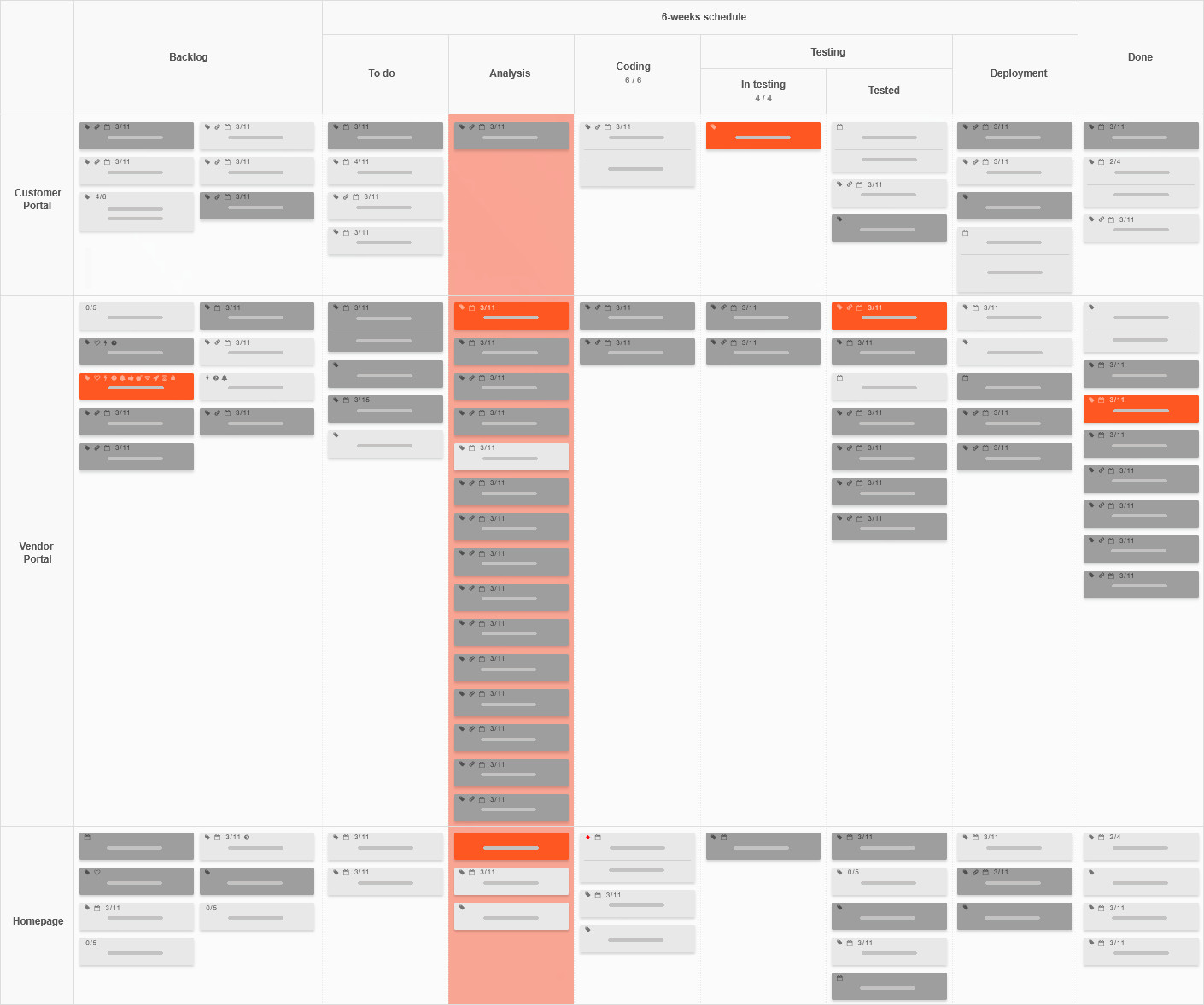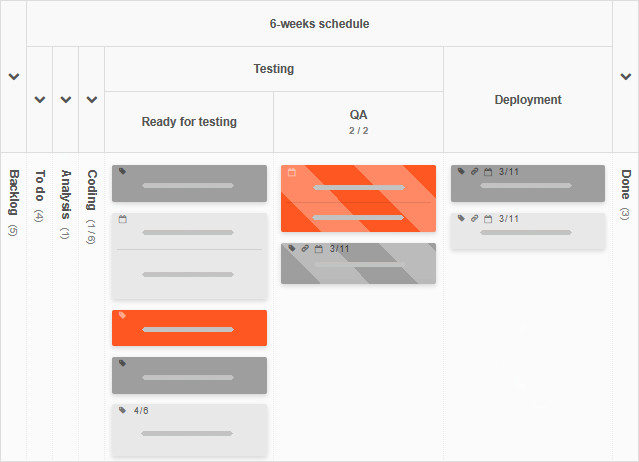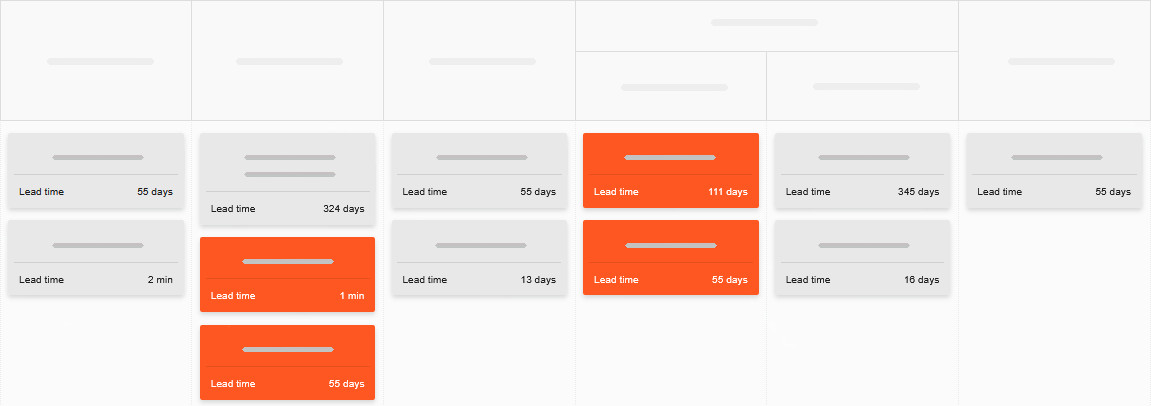Blog
Boosting Team Transparency and Accountability with Kanban09 Jul 2025

Most teams reach for a system like Kanban not because they crave another whiteboard or web service. It's because they're frustrated—by blurry responsibilities, missed deadlines, and an endless loop of status meetings that don't seem to clarify much. A properly implemented Kanban is more than a colorful task board—it’s a structural antidote to dysfunction, capable of reshaping how teams communicate, take ownership, and truly collaborate.
What follows is guidance on how to use Kanban not just to track tasks, but to engineer a culture of transparency, accountability, and working together as a team.
Illustrate both tasks and constraints
The primary power of Kanban is process shape and state visibility—but not in the sense that it breeds passive observation. A working board doesn’t just show what people are working on, it also reveals where the system stalls and breaks down.

Tasks getting stuck in a specific column can mean that the team working on them is slow, but it can also mean that work is being pushed into this process step too aggressively. But seeing the process as it happens isn’t about finger-pointing, but about facilitating a shared understanding of systemic constraints. Once bottlenecks are visible, teams can discuss them directly, rather than making them personal. This is the gateway to openness: focusing on the unique interdependent systems, not personalities.
It's worth adding policies to columns to define what each of the completion stages means. That way, you’ll quickly see where team assumptions diverge — and learn that divergence is where process transparency is born.
Use WIP limits to force difficult conversations
The point of limiting work in progress isn't speed, but emphasis on focus and prioritization. It's a simple mechanism of provoking deliberate negotiation among team members.
Let's say the Quality Assurance column has a limit of two items. The moment a third feature is ready for testing, someone has to ask “What gives?” It's not so much an interruption, as a friction point designed to force alignment. The team has to decide whether one of the items already in QA should be de-prioritized, whether another team member ought to be pulled into testing, or perhaps the upstream flow should be slowed down.

This natural pressure cooker improves flow, and it surfaces hidden dependencies and priority conflicts. This matters since work accountability will not emerge from assigning more responsibility, but it will arise when a team has to make trade-offs transparently, and owns them as a team.
Public definition of “done”
Operating with silent, personalized definitions of “done” breeds misalignment and chaos: one person closes a card when it compiles, and another waits for user feedback. If we multiply this by the number of team members, we get meaningless data, with cycles that are impossible to measure.

Kanban demands clarifying and sharing when tasks can move to the next stage. The definition of done has to be a team artifact — cyclically revisited, negotiated, and always aligned with downstream consumers. Those definitions, or column policies, are far more than bureaucratic documents — they form the team's shared language. With stage definitions reached and cherished, every card move is an act of mutual accountability.
When meeting, analyze flow, not status
Typical status meetings yield no results due to focus not on solving problems, but on reporting them. A diligently maintained Kanban board flips this on its head, making the standup look not at what you did, but what the team needs to do next to maintain flow. The matter of discussion is task cards, not people.
So, instead of asking What did you do yesterday?, ask:
- What’s blocking this item?
- Why has this task been stuck in ‘In Progress’ for three days?
- Is the current WIP limit forcing us to focus, or creating bottlenecks?
An approach like this fosters genuine collaboration: teams jointly triage the board rather than reporting to one another. The shift from self-oriented updates to system-oriented discussions is what can transform a status meeting into a decision-making conversation.
Track both completed and stale work
Burndown charts can be just as comforting as misleading. It may be more truth-revealing to note how long tasks are sitting in particular process stages.
By visualizing the age of cards (color-coding or time-stamping might be the simplest way to do it), teams can detect slowdowns before they impact delivery. Tracking task age invites early interventions and cross-functional collaboration. Importantly, when an aging card is spotted, the goal isn't to find the team member responsible for it, but to find who can help to get it moving.

It is that combination of foresight and post-fact analysis that turns a Kanban board into a living diagnostic tool. Moreover, the combination cultivates a sense of shared ownership — it is everyone’s job to get tasks flowing again.
Finish work, and reflect on it
It's easy for project retrospectives to devolve into generalized venting sessions. For Kanban teams, it's easy to do better than this — through a clear flow of work and metrics such as lead time, and cycle time, the team can ground retrospectives in process data, not their feelings.
It's a good idea to ask:
- Which column tends to accumulate the most blockers?
- What are our most commonly occurring interruption types?
- How often are WIP limits broken, and why?
Answering these types of questions allows teams to look back at the work, not the people, and diagnose process issues. It’s also a natural way to encourage openness, as it focuses on the process itself, not individual behavior.
The board should be designed by the team, not for it
This aspect of using Kanban cannot be overstated: the Kanban board should represent how the team works, not how a manager wishes them to work. Overly prescriptive and process-false boards alienate people, becoming performative rather than helpful.
Ensure the team is involved in defining columns, process states, task types, and policies. Having the team co-create the system makes it invested in it. And it's only when the board reflects reality, not aspiration, that it can become a real-life collaboration tool.
Team openness comes from a shared frame of reference, and accountability grows when people use a system they helped shape. When the board models actual inter-dependencies, collaboration can thrive.

It's hard to believe for non-Kanban users, but the method's most transformative effects aren’t visual — they’re cultural. When used with discipline and intention, Kanban reshapes the very conversations a team has: from private gripes to shared priorities, from vague responsibilities to clear policies, from siloed ownership to collective problem-solving.
While Kanban cannot create trust, it can easily expose the gaps where trust is missing, and thereby provide the structure needed to rebuild it. And that's hardly a side effect of task management, it's the architecture of a better team.
Sign up for a 14-day free trial
to test all the features.
Sign up now and see how we can help
your organization deliver exceptional results.